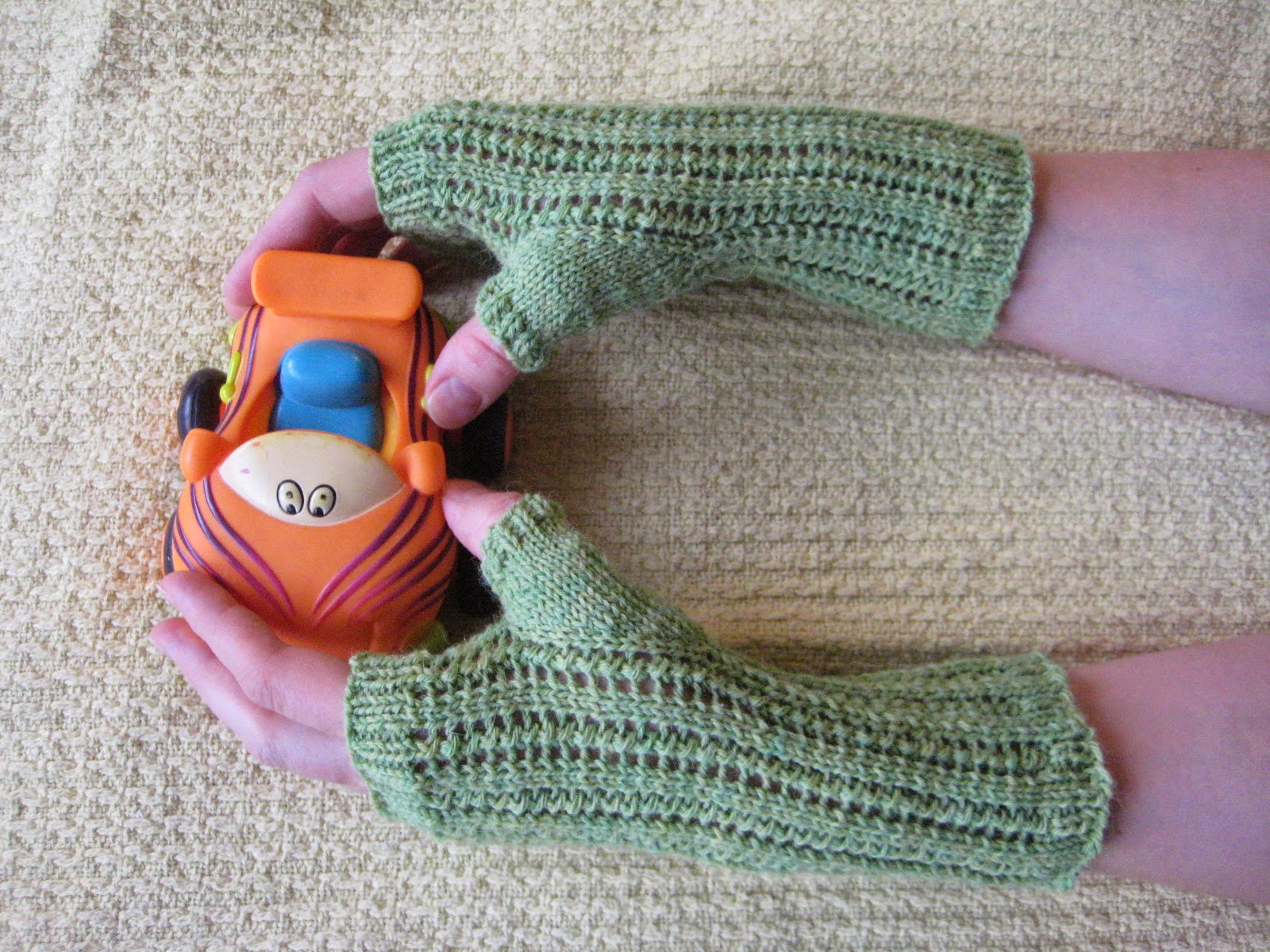 |
| Staghorn Fingerless Gloves, with tweeting bird, to complete the natural vibe |
Well, I'm still picking away at the same skein of yarn that I used for the Razor Shell Fingerless Gloves, and I'm still digging the results (and amazingly, even after finishing these bad boys, I think I'm still going to be able to put together a two-color cowl with the rest of my single skein). Anyway, this pair of fingerless gloves uses a basic stockinette and a pretty cable to create a bit of interest in the thumbs. And it's still such a lover-ly green!
 |
| Just one hand. It looks lonely, doesn't it? |
Yarn: Berroco Ultra Alpaca Fine (50% Superwash Wool, 20% Super Fine Alpaca, 30% Nylon; 433 yards [400 meters]/100 grams); #12177 Kaffir Mix - one skein
Needles: One set of double pointed needles (dpns) in size 2, one set of dpns in size 1, cable needle (cn)
Notions: Tapestry needle
Gauge: 30 stitches = 4 inches
Using your size 1 needles, cast on 56 (66) stitches loosely, and distribute between your three double pointed needles as follows: 20 stitches on your first needle, 16 stitches on your second needle, and 20 stitches on your third needle (for larger size: 20 stitches on you first needle, 26 stitches on your second needle, and 20 stitches on your third needle). Join in round. Then, we'll knit the following ribbing row:
Ribbing Row: * k1, p1 *






